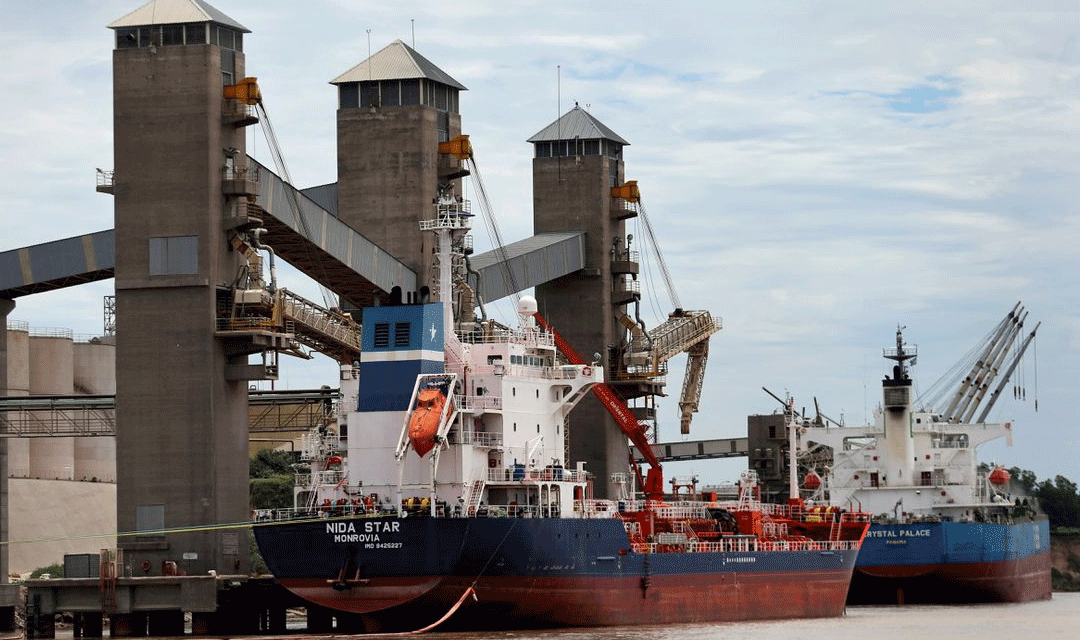Circular
Servirio`s News
INCOME OF TRUCKS WITH CORN TO THE PORTS OF ROSARIO AND THE SOUTH OF BUENOS AIRES GREW BY 27% AND 31% RESPECTIVELY.

Increase has had a positive impact on the scheduled shipment figure of 9.1 million tons for July and August.
The high acreage of corn harvested in the last month in Argentina has led to a marked increase in the number of trucks entering the ports. In fact, from the beginning of July of this year to date, 151,648 trucks have entered the ports of Gran Rosario, which marks an increase of 27% compared to the same period of 2020, while the ports in the south of the province of 48,394 arrived in Buenos Aires, 31% more than the previous year.
But, in addition, the severe downspout of the Paraná River is causing logistical problems in the loading of ships in the Up-River ports, for which a high proportion of the cargo must be relocated to the southern ports of Buenos Aires. In fact, the entry of trucks with corn to both port areas since the beginning of July to date, has considerably increased the unloading to the ports of Bahía Blanca and Necochea / Quequén, surpassing the records of previous years. In Gran Rosario, meanwhile, the number of trucks entered is above the 2020 record but below the 2019 figure.
Likewise, this increase in the arrival of trucks with corn to the southern ports of the province of Buenos Aires is also consistent with the numbers of shipments. In the months of July and August of this year, the total of tons of corn shipped and scheduled to be shipped from Argentine ports amounts to 9.1 Mt, of which 67% originate from the ports of Gran Rosario, while 30% the ports of Bahía Blanca and Necochea / Quequén. This is the lower relative importance of the Up-River ports (and, in parallel, the highest proportion of those in southern Buenos Aires) since at least 2018.
To collect 2%
The corn harvest advanced strongly in the last month and is virtually finished, with only 2% of the area remaining to be harvested in all of Argentina. In the current campaign, a large proportion of the total area was planted with late segment maize, this has resulted in a large number of hectares being harvested between the beginning of July and the beginning of August, the Rosario Stock Exchange reported.
The number of weekly hectares harvested since the beginning of July 2021 has been high, rising above the record of previous years in several weeks, particularly from the middle of the month to date. In addition, in that period 3.5 million hectares were harvested in total, 39% of the total area.
Soy
As for soy, there are two interesting phenomena to analyze that are related to each other. On the one hand, soybean exports in the first three months of the campaign reached 1.8 Mt, that is, 56% less than in the first quarter of the previous cycle. In addition, it is the second lowest volume in the last decade, surpassed only by what happened in the 2017/18 cycle, that of the fateful historical drought that severely affected production.
On the other hand, soybean crush in the first 3 months of 2020/21 totaled 12.6 Mt, 10% more than in the first three months of the previous season and registering the second best figure of the last decade.
This is mainly explained by the increase in oilseed oil prices. Vegetable oils have seen a phenomenal bull rally in the last 12 months, including soybean oil. The increase in prices has improved the oil share (the participation of oil in the total value), encouraging greater local processing of beans and then exporting derived products, to the detriment of exports of unprocessed grain. In fact, flour exports between April and June totaled 8.45 Mt, an increase of 17% compared to the 2019/20 cycle and the highest volume in six years, while oil exports in the first quarter of the season amounted to 1 , 83 Mt, the best record ever.


